Arup is a British multinational professional services firm headquartered in London that provides design, engineering, architecture, planning, and advisory services across every aspect of the built environment. It employs about 17,000 people in over 90 offices across 35 countries, and has participated in projects in over 160 countries.
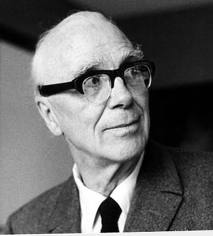
Sir Ove Nyquist Arup was an English engineer who founded Arup Group Limited, a multinational corporation offering engineering, design, planning, project management, and consulting services for building systems. Ove Arup is considered to be among the foremost architectural structural engineers of his time.

Kingsgate Bridge is a reinforced concrete construction footbridge across the River Wear, in Durham, England. It is a Grade I listed building. It was personally designed in 1963 by Ove Arup, the last structure he ever designed. Kingsgate Bridge connects Bow Lane on the peninsula in the centre of Durham to Dunelm House on New Elvet, which building Arup's studio also contributed, and opened in 1966. Kingsgate Bridge is thought to have been one of Arup's favourite designs of all: he had spent many hours working on every detail of the plans.

Hochtief AG is a global provider of infrastructure technology and construction services, with locations in North America, Australia, and Europe. The Essen based company is primarily active in the fields of high tech, energy transition, and sustainable infrastructure. With the international projects making up 95% of the company's revenue, Hochtief was among the largest international construction firms in 2023.
Sir Edmund "Ted" Happold was a structural engineer and founder of Buro Happold.
Halcrow Group Limited was a British engineering consultancy company. It was one of the UK's largest consultancies, specialised in the provision of planning, design and management services for infrastructure development worldwide. With interests in transportation, water, maritime and property, the company undertook commissions in over 70 countries from a network of more than 90 offices.
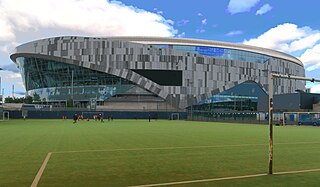
The Institution of Structural Engineers' Structural Awards have been awarded for the structural design of buildings and infrastructure since 1968. The awards were re-organised in 2006 to include ten categories and the Supreme Award for structural engineering excellence, the highest award a structural project can win.
Sir Gerhard Jacob Zunz was a British civil engineer and former chairman of Ove Arup & Partners. He was the principal structural designer of the Sydney Opera House.

The Hulme Arch Bridge in Hulme, Manchester, England, supports Stretford Road as it passes over Princess Road, and is located at grid reference SJ838968. The construction of the bridge formed part of the regeneration of the Hulme district of Manchester, both by re-establishing the former route of Stretford Road, which had been cut into two halves by the construction of Princess Road in 1969, and by providing a local landmark. The location was previously occupied by a footbridge.
Michael John Glover, OBE, FREng, is a British Engineer and a director of Arup and technical director of 'Rail Link Engineering'.
Galliford Try plc is a British construction company based in Uxbridge, England. It was created through a merger in 2000 of two businesses: Try Group, founded in 1908 in London, and Galliford, founded in 1916.
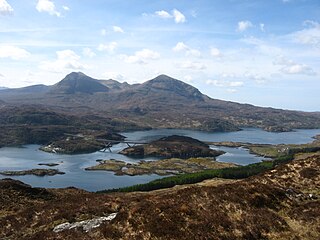
Kylesku is a small, remote fishing hamlet in Sutherland in the Scottish Highlands. Until 1984, it was the site of a free ferry. It takes its name from Caolas Cumhann, Gaelic for "narrow strait", which is the channel just to the west of the village that connects Loch Glencoul and Loch Glendubh to Loch a' Chàirn Bhàin.

Morrison Construction is a large construction business, which was acquired by Galliford Try in 2006.

The Queensferry Crossing is a road bridge in Scotland. It was built alongside the existing Forth Road Bridge and the Forth Bridge. It carries the M90 motorway across the Firth of Forth between Edinburgh, at South Queensferry, and Fife, at North Queensferry.

RRI GmbH Rhein Ruhr International – Consulting Engineers is an engineering company located in Essen, Germany. RRI is active in the fields of consulting, engineering, project management, risk management and EPCM services for industrial and public projects, both at the national and international level. Its business areas had been industry, infrastructure and real estate. In April 2014, RRI has restructured business and gained a new investor for its business – AMR GmbH in Essen, Germany. Management and Business Units maintain the same.
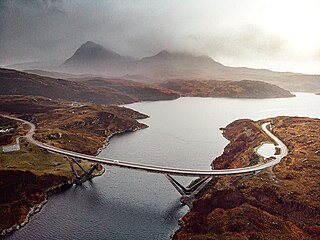
The Kylesku Bridge is a distinctively curved concrete box girder bridge in north-west Scotland that crosses Caolas Cumhann ; the channel that connects Loch Glencoul and Loch Glendhu with Loch a' Chàirn Bhàin in Sutherland. It is listed as category A, the highest grade.
Flatiron Construction Corporation, a subsidiary of Hochtief, is a heavy civil infrastructure contractor headquartered in Broomfield, Colorado, United States.
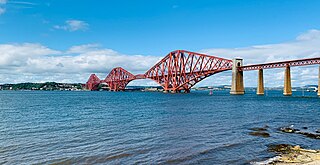
The Forth Bridge is a cantilever railway bridge across the Firth of Forth in the east of Scotland, 9 miles west of central Edinburgh. Completed in 1890, it is considered a symbol of Scotland, and is a UNESCO World Heritage Site. It was designed by English engineers Sir John Fowler and Sir Benjamin Baker. It is sometimes referred to as the Forth Rail Bridge, although this is not its official name.
VSL International is a specialist construction company founded in 1954. VSL contributes to engineering, building, repairing, upgrading and preserving transport infrastructure, buildings and energy production facilities. Based in Switzerland, VSL is owned by French construction company Bouygues.
John Charles La Roche is a New Zealand engineer and author. As an engineer he specialised in design work for water treatment plants and in waste management.














